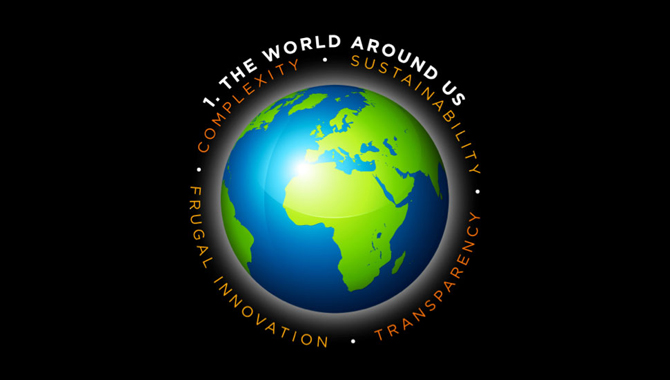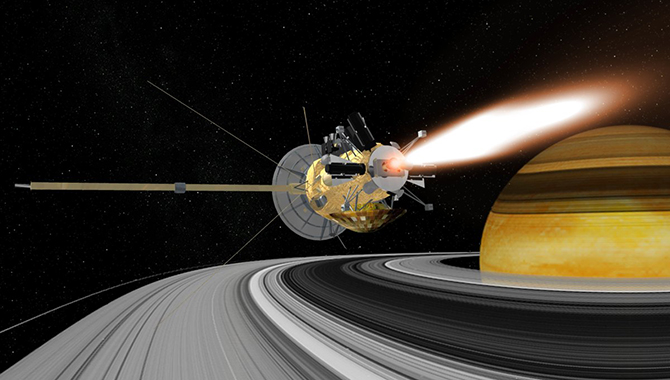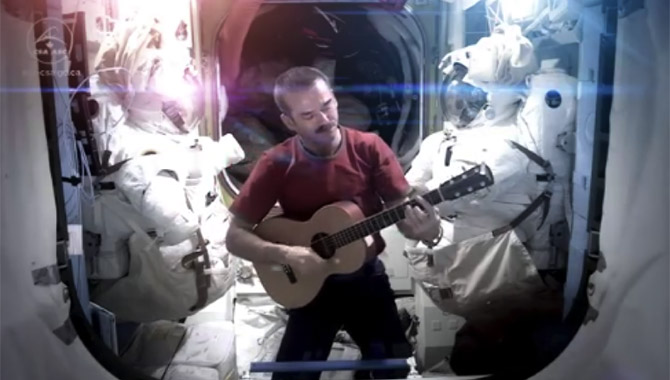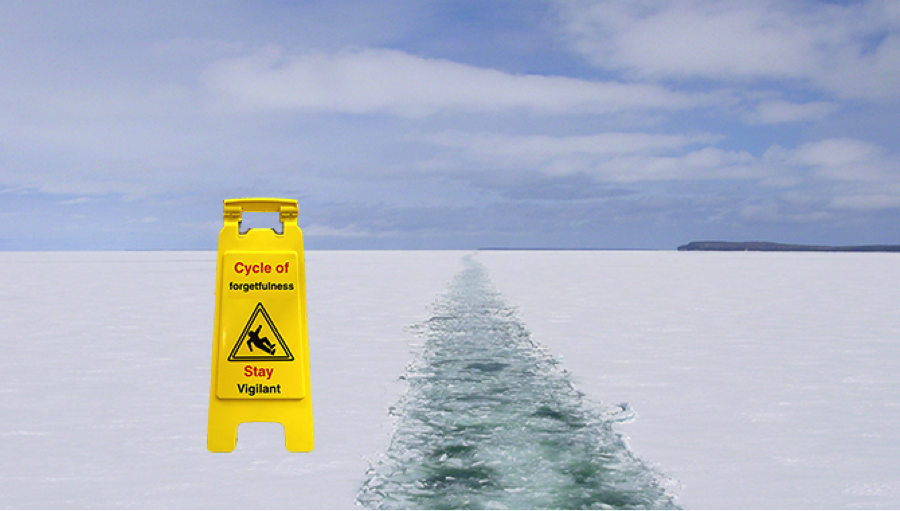
Rusty Schweickart crossing the threshold.
Photo Credit: NASA
Joseph Campbell, the world-famous mythologist, wrote his last book, The Inner Reaches of Outer Space, after being inspired by a symposium in which he appeared alongside NASA astronaut Rusty Schweickart.
Campbell’s theory of the archetypal hero’s journey—popularized by his well-known book, The Hero with a Thousand Faces, and by the interview series, The Power of Myth, with Bill Moyers—continues in The Inner Reaches of Outer Space, particularizing and modernizing one of his seminal themes: an external journey—this time into Space—is correspondingly and equally an inner journey.
From the standpoint of Knowledge Services, this universal myth (often referred to as the “monomyth”) of the hero’s journey illustrates much of what NASA aims to achieve. The nascent hero begins the new journey cautiously, leaving home, a zone of comfort. While crossing the threshold to adventure, the hero is aided by the advice of a seasoned hero and is often given a powerful object to further the journey. After the story reaches its arch and a great goal is achieved, there is a time for reflection as the hero returns home, bringing new knowledge only attainable from experiencing the journey and—more often than not—bearing treasure with the power to heal.
In The Inner Reaches of Outer Space, Campbell writes, “…when Armstrong’s booted foot came down to leave its imprint on the surface of the moon, no one knew how deeply it might sink into lunar dust. That was knowledge a posteriori, knowledge from experience, after the event.”
While the exploration of space is the latest venture of heroes, Campbell mentions the tale of Gilgamesh, a Sumerian myth considered to be first with an epic hero, in The Hero with a Thousand Faces. The king Gilgamesh does not enter the void of space, but he does set out to sink into the abyss of great water that “surrounds the world” to retrieve a coveted plant—literally called “never grow old” that only grows at the bottom of the great water. He is given advice on how to retrieve this plant by the wizened hero who had survived the great flood that took place before Gilgamesh’s birth.
“Gilgamesh tied stones to his feet and plunged,” writes Campbell. “Down he rushed, beyond every bound of endurance… reached the bottom of the bottomless sea, he plucked the plant… cut off the stones, and made again for the surface.” On his way back to his kingdom, Gilgamesh falls fast asleep, leaving the plant thoughtlessly unguarded. A snake eats his plant that promised eternal youth and slithers off. Gilgamesh, once an arrogant king, returns home humbled but wiser, to be a better leader to his subjects because of his journey. For Gilgamesh, the critical outcome of the journey was not immortality but humility and a greater knowledge of the nature of the world.
In the hero’s journey, I see four important ideas of Knowledge Services. These are the concepts and outcomes of mentoring, lessoned learned, new knowledge and innovation, and the case study itself. In the work place, though they might not call attention to being in that specific role, mentors both teach and challenge; and whether through explicit knowledge or literally engineered instruments, mentors give us powerful tools. Once the challenge has been met, on the way home, there is a time to reflect (by staying awake!) on the lessons of the journey. With Pause and Learn, there is time to learn at all major steps of the journey. Between journeys, we tell of our adventures, sharing as mentors or as colleagues, our stories as case studies. And one cycle—or orbit—of the hero’s journey is complete.









